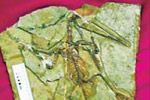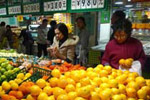Photos
Art treasures of Tar Monastery
Updated: 2009-08-07 17:02
(chinaculture.org)
 |
|
|
The Tar Monastery, one of the six most important monasteries of the Gelukpa (Yellow Hat) school of Tibetan Buddhism, is a large complex featuring dozens of halls and towers on a mountainside in both Tibetan and Han architectural styles.
Located in Huangzhong County, 25 kilometers from Xining, capital of Qinghai province, the monastery was built in 1560 in honor of the founder of Gelukpa School, Tsongkhapa. It’s known for its many butter sculptures, mural paintings and barbolas which fully demonstrate the artistic style and skill of Tibetan culture.
Butter sculptures
|
|
Traditionally, Tibetan butter sculptures are displayed on monastery altars and family shrines as offerings. The butter sculptures originated in Tibet and were introduced to the Tar Monastery in the early 17th century. Many monks in monasteries in China make butter sculptures, but those of the Tar Monastery excel in technique and scale.
Butter sculptures cover a broad range of themes, but mostly, they center on Buddhism, historic stories, Buddha, personal biographies, flowers, birds, fish, insects, and pavilions. Often the sculptures are part of a series that depicts a story, such as the life of Sakyamuni.
|
|
The making of a butter sculpture is itself a daunting task. As butter made from yak milk melts in warm weather, butter sculptures have to be made by hand during the coldest months of the year, usually from October to January.
As time goes on, they are imbued with the trends of the times. For example, the butter sculpture "The Story of Sakyamuni" not only enriched the traditional style of butter sculpting, but also reflects real life. In this way, the former singular method has evolved into a multi-method system, including a combination of stereoscopic sculptures and reliefs -- a combination of single sculptures and multi sculptures.
|
|
In a group of butter sculptures, a pavilion, a Buddha or an arhat may be as high as several meters; and a flower, a bird, an insect and a fish may be as small as three to five centimeters. All of them are lifelike.
Deformities begin appearing above 15 degrees Centigrade and the sculptures begin to melt at 25 degrees Centigrade. With a view of guaranteeing the quality, the monks need to dip their hands in freezing water from time to time. This is why they tend to suffer from arthritis and some become crippled. Their contribution to Buddhism is really incredible.
Mural paintings
The Tar Monastery contains countless murals. There are numerous large-sized colorful and vivid mural paintings in the Great Temple of Golden Tiles, the Great Scripture Hall and the Small Scripture Hall.
|
|
The murals are done directly on walls and beams, but in most cases on fabrics. A kind of stony mineral dye is used in painting to keep pictures fresh for hundreds of years.
Specials

President Hu visits the US
President Hu Jintao is on a state visit to the US from Jan 18 to 21.

Ancient life
The discovery of the fossile of a female pterosaur nicknamed as Mrs T and her un-laid egg are shedding new light on ancient mysteries.

Economic Figures
China's GDP growth jumped 10.3 percent year-on-year in 2010, boosted by a faster-than-expected 9.8 percent expansion in the fourth quarter.



